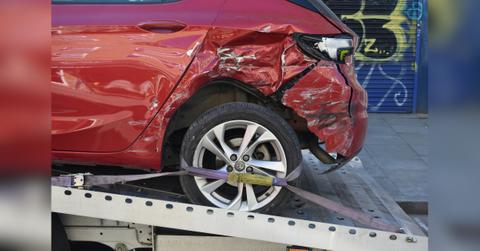 NEWS
NEWSTotaled Cars for Sale: A Friendly Guide to Turning Wrecks into Rewards

Aug. 20 2025, Published 1:08 a.m. ET
A car earns the “totaled” label when an insurance company decides that fixing it would cost more than the car is worth. That doesn’t always mean the vehicle is worthless. In fact, totaled cars for sale can be smart buys for hobby mechanics, parts hunters, or anyone looking to save serious cash. This guide breaks down the key things you should know before you bid, or click the “Buy It Now” button, on your next project.
Why a Totaled Car Might Be Right for You
Most buyers walk right past salvage vehicles for sale because the word “totaled” sounds scary. In practice, it just means the repair bill crossed a dollar line set by an insurer. Sometimes that bill is high only because shop labor or factory-new parts cost a fortune. If you can wrench at home, shop recycled panels, or live with a few dings, the numbers can flip in your favor.
Totaled listings also give you more choice. Alongside the usual compact sedans, you’ll spot wrecked trucks for sale, flooded vehicles for sale, and even crashed supercars for sale that still have healthy drivetrains. Whether you want a weekend track toy or a parts donor for a classic build, the salvage world hands you options you won’t see on a dealer lot.
Where the Deals Hide
Twenty years ago, you had to roam rows of junkyard cars for sale and hope for the best. Today, most inventory lives online. Digital marketplaces such as AutoBidMaster pull thousands of lots from Copart and other salvage auto auction networks into one searchable dashboard. You can filter by damage type, title brand, location, or even look only at listings that let you buy salvage cars without bidding. Skip the live vehicle auction stress and lock in a price with one click if you see something that fits your budget.
Besides the big nationwide sites, a few regional salvage car auctions still hold in-person sales. These events can be gold mines for hail-damaged cars for sale, bargains, or lightly sideswiped SUVs. Show up early, bring a flashlight, and inspect every inch; yard rules usually ban test drives.
Popular Damage Categories and What They Mean
- Collision hits are the classic crashed cars and wrecked vehicles for sale. Look for bent frame rails, airbag deployment, and broken glass.
- Flood units include everything from knee-deep freshwater soakers to salt-water hurricane victims. Electronics hate water, so plan for new modules and lots of cleaning.
- Hail bruises often look worse than they are. If you can live with golf-ball dents or find a paintless dent repair shop, you might score a near-perfect drivetrain at half price.
- Theft recovery totals may simply miss seats or wheels. Easy fixes—if the wiring harness is still intact.
- Fire damage is the trickiest. Small under-hood fires can ruin plastics and wiring you can’t see in listing photos. Unless you love electrical puzzles, tread cautiously.
Trucks, Motorcycles, and Supercars - Special Things to Watch
Salvage trucks for sale carry bigger parts. A bent control arm on a half-ton pickup costs more than the same part on a compact car, and shipping oversized body panels is pricey. Weigh those costs before you bid.
Salvage motorcycles for sale and wrecked motorcycles for sale require careful frame inspection. Even a low-side slide can twist a sport-bike’s aluminum spars. Check seller notes for “runs and drives”; a non-running bike often points to deeper engine trauma.
Wrecked supercars for sale and salvage supercars for sale attract bidders who want exotic engines for kit-car or track projects. Carbon-fiber body panels and specialty electronics can overwhelm a back-yard mechanic, but drivetrain parts alone may justify the purchase price. Do the math with dealership parts catalogs before you leap.
Reading Auction Photos Like a Detective
Online listings usually include at least ten high-resolution images. Zoom in on:
- Panel gaps - uneven lines can hint at frame twist.
- Wheel angles - tires that don’t point straight may signal bent suspension.
- Seat rails and carpet edges - rust or mud rings can expose hidden flood damage.
- Airbag covers - if bags deployed, factor in the cost of replacement bags, sensors, and modules.
- Roof ripples - they often mean a rollover that even a perfect paint job won’t hide.
If the vehicle matters to you, pay for a third-party inspection. Independent inspectors can confirm engine compression, transmission function, or water incursion that you can’t spot on a screen.
Simple Math to Stay On Budget
Grab a notepad or phone app and add up four numbers:
- Purchase price (hammer bid or “Buy It Now” cost)
- Marketplace fees (every salvage site posts a fee chart)
- Transport cost (get quotes before you bid, especially for oversized wrecked trucks for sale)
- Essential repairs (parts and outside labor you cannot avoid)
Compare the total with the private-party value of a clean-title twin. Aim to land at least 25 percent under market to protect against surprise costs, like discovering cracked alloy wheels or hidden frame rust on broken cars for sale.
Want OK! each day? Sign up here!
Moving Your New Prize Safely
Most yards allow three to five free storage days. After that, per-day fees kick in. Arrange transport early. Open trailers cost less, but enclosed trucks guard high-end wrecked supercars for sale against road debris and prying eyes. Make sure the carrier knows if the vehicle rolls, steers, and brakes; a non-rolling shell needs a winch or forklift, and that adds to the bill.
Paperwork and Insurance Basics
Each state runs its own rebuilt title program. Check your local DMV site for inspection checklists and forms. Plan to keep repair receipts for every major component, especially airbags, lights, and used body panels. Some states also want photos that show damage before and after repair.
Insurance companies vary. A few will write full coverage on rebuilt titles, but many offer only liability. Call an agent before you spend a dime if you need comprehensive or collision protection, particularly on high-value salvage trucks for sale or flagged flood vehicles.
Common Pitfalls You Can Avoid
- Chasing rare trim parts that cost more than the car is worth
- Underestimating shop labor when you run out of evenings to finish the job
- Skipping a frame alignment on vehicles with obvious front-corner hits
- Ignoring title rules that make it costly, or impossible, to register in your state
- Buying sight unseen from salt-belt regions where unseen rust can ruin suspension mounts
Smart Ways to Stretch Your Dollars
Look for lots that come with extra parts in the trunk—bumpers, headlights, or even factory manuals. Search local classifieds for donor cars with matching powertrains. When researching prices, compare OEM numbers with interchangeable parts lists; a fender from a different trim level or model year might bolt right on.
If you want to avoid bidding wars, filter for listings that let you buy salvage cars without bidding. You can study the damage report in peace, add numbers slowly, and sleep on the decision without the auction clock ticking down.
Wrapping Up
Totaled cars for sale can be bad news for their first owners, yet good news for skilled or patient buyers who understand the process. Use clear eyes, honest math, and plenty of research time. Whether your goal is a budget commuter, a diesel workhorse, or spare parts for a track build, the salvage world rewards careful shoppers. Spend time on forums, watch a few online salvage car auctions without bidding, read the rule books, and you’ll soon see which listings offer real value. Treat every wreck as a puzzle you can solve, and you may end up driving a car you never thought you could afford, built by your own hands and running proud on a clean rebuilt title.


